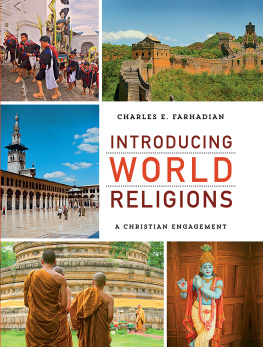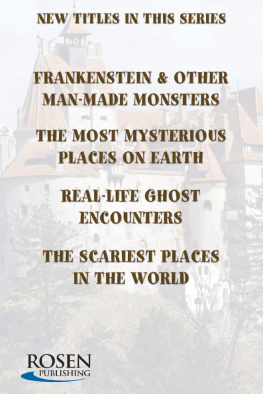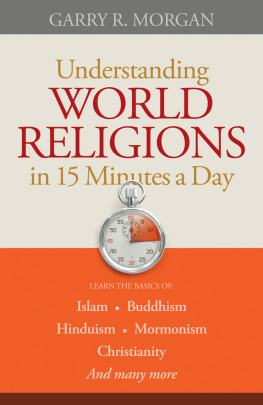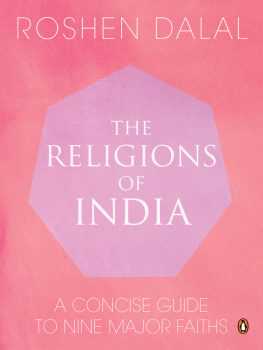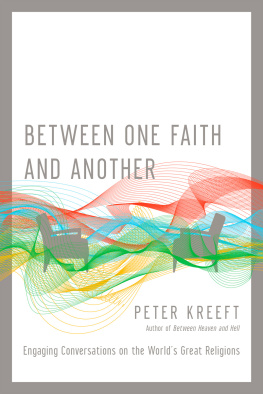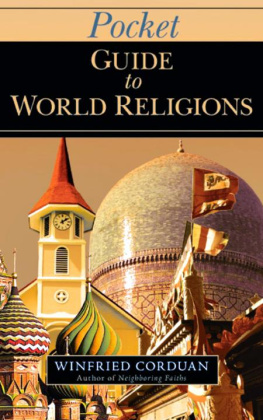Farhadian - Introducing world religions: a Christian engagement
Here you can read online Farhadian - Introducing world religions: a Christian engagement full text of the book (entire story) in english for free. Download pdf and epub, get meaning, cover and reviews about this ebook. City: Grand Rapids;MI, year: 2015, publisher: Baker Publishing Group;Baker Academic, genre: Religion. Description of the work, (preface) as well as reviews are available. Best literature library LitArk.com created for fans of good reading and offers a wide selection of genres:
Romance novel
Science fiction
Adventure
Detective
Science
History
Home and family
Prose
Art
Politics
Computer
Non-fiction
Religion
Business
Children
Humor
Choose a favorite category and find really read worthwhile books. Enjoy immersion in the world of imagination, feel the emotions of the characters or learn something new for yourself, make an fascinating discovery.
Introducing world religions: a Christian engagement: summary, description and annotation
We offer to read an annotation, description, summary or preface (depends on what the author of the book "Introducing world religions: a Christian engagement" wrote himself). If you haven't found the necessary information about the book — write in the comments, we will try to find it.
Farhadian: author's other books
Who wrote Introducing world religions: a Christian engagement? Find out the surname, the name of the author of the book and a list of all author's works by series.
Introducing world religions: a Christian engagement — read online for free the complete book (whole text) full work
Below is the text of the book, divided by pages. System saving the place of the last page read, allows you to conveniently read the book "Introducing world religions: a Christian engagement" online for free, without having to search again every time where you left off. Put a bookmark, and you can go to the page where you finished reading at any time.
Font size:
Interval:
Bookmark:
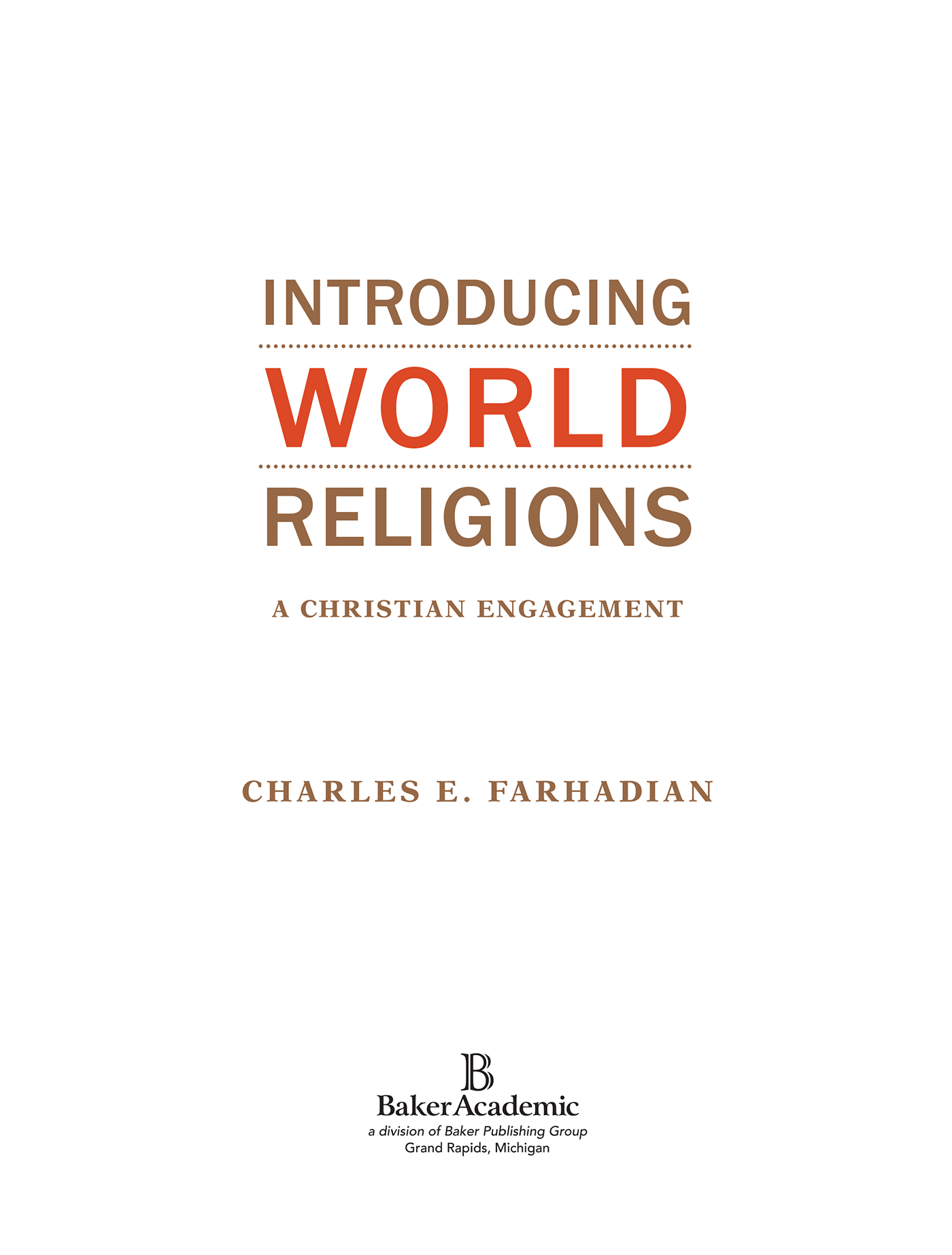
2015 by Charles E. Farhadian
Published by Baker Academic
a division of Baker Publishing Group
P.O. Box 6287, Grand Rapids, MI 49516-6287
www.bakeracademic.com
Ebook edition created 2015
All rights reserved. No part of this publication may be reproduced, stored in a retrieval system, or transmitted in any form or by any meansfor example, electronic, photocopy, recordingwithout the prior written permission of the publisher. The only exception is brief quotations in printed reviews.
Library of Congress Cataloging-in-Publication Data is on file at the Library of Congress, Washington, DC.
ISBN 978-1-4412-4650-9
Unless otherwise indicated, Scripture quotations are from the New Revised Standard Version of the Bible, copyright 1989, by the Division of Christian Education of the National Council of the Churches of Christ in the United States of America. Used by permission. All rights reserved.
Scripture quotations labeled NIV are from the Holy Bible, New International Version. NIV. Copyright 1973, 1978, 1984, 2011 by Biblica, Inc. Used by permission of Zondervan. All rights reserved worldwide. www.zondervan.com
Image on page 215 from Wikimedia Commons.
Image on page 415 from Macrovector/Shutterstock.
You can count on two things from this excellent introduction: (1) reliable information about the worlds religions and (2) guidance in seeing that information through a Christian lens. Charles Farhadian has given us a religion text for the twenty-first century: accurate, faithful, respectful, and compassionate. It now has a permanent place on my bookshelf.
Terry Muck , Louisville Institute
Professor Farhadian has created a world religions text like no other. While setting up the conversation about world religions without fear and without apology from a Christian perspective, the author seeks to create a dialogue in which members of all religions would feel welcomed and fairly represented. The text is masterfully interdisciplinary, illustrating the pervasiveness of religion in human experience throughout history and the relevance of religion to every field of study. The lucid prose, wide-ranging illustrations, study helps, and use of sacred texts make the work inviting and useful for an introductory class in either an academic or church context. In addition, the books overall framing of the conversation as well as its comprehensiveness make it of value to someone long familiar with the field. This text is truly matched to the challenge of religion in the twenty-first-century global context.
Shirley A. Mullen , president, Houghton College
Farhadians Introducing World Religions addresses a Christian audience by acknowledging their distinct location while at the same time making full use of critical social-scientific approaches to the study of religion. The result is a text that will be useful far beyond church-related universities and seminaries. His introduction is a masterful multidimensional account of how contemporary approaches to religious studies have come about and how these continue to inform the understanding of religion. He then systematically addresses these concerns in the context of each religion, providing a clear framework that is particularly useful for nonexpert readers and students.
Robert Hunt , Perkins School of Theology, Southern Methodist University
To my family,
Katherine, Gabriel, Gideon,
Jeanette, Thea, Dorothy,
whose love and encouragement mean
the world to me
And to my students,
who make teaching such a joy
Contents
Illustrations
Maps
Figures
Acknowledgments
While it is impossible to thank all those who have shaped my thinking on the topics covered in the book, I want to share my gratitude for a few teachers and friends who have influenced my intellectual and personal formation: from Seattle Pacific University, Dan Berg and Miriam Adeney; from Yale University, Lamin Sanneh, David Kelsey, and Robert Johnson; from Boston University, Dana Robert, Robert Hefner, David Eckel, Livia Kohn, Charles Lindholm, and Chai-sik Chung; from the University of Edinburgh, Andrew Walls; from Calvin College, Joel Carpenter, John Witvliet, Rick Plantinga, Dan Harlow, and Dan Bays; from Papua, Benny Giay, Octo Mote, Noakh Nawipa, and Markus Kilungga; from The Mission Society, Darrell Whiteman; from Fuller Theological Seminary, Scott Sunquist; special friends and their families, Scott and Viji Cammauf, Chris and Michelle Hughes, Vijaysekhar and Jalene Jayaraman, Tim and Kim Notehelfer, Raul and Nora Ortiz, Mike and Chelsea Sheffey, and Matt and Karen Yonally. I thank the numerous religious communities and individuals who have opened their doors to me for research.
I am thankful to the administration at Westmont College, particularly the board of trustees, President Gayle Beebe, and Provost Mark Sargent, for providing me with professional development grants that afforded me time to write. Gratitude goes to Westmont colleagues Bruce Fisk, Maurice Lee, Tremper Longman, Chandra Mallampalli, William Nelson, Caryn Reeder, Helen Rhee, James Taylor, Curt Whiteman, and Telford Work for their support, collegiality, and humor. Appreciation goes to my students at Calvin College and Westmont College, whose enthusiasm to engage the religions of the world, sensitivity when visiting places of worship, and courage to wrestle with what it means to be a Christian in our world today, continues to enliven my teaching and writing. I am particularly grateful for Professor William Warners generosity in providing me with office space during my sabbatical as visiting professor at the University of California, Santa Barbara, while he was chairman of the English Department at the same university. I greatly appreciate the opportunity to have served as the Underwood Distinguished Professor at Yonsei University in Seoul, Korea, in the fall of 2014, where I received warm hospitality from Dean Jeung Suk-Hwan, Professor Kwon Soo-Young, and other colleagues during the final phases of the preparation of this book. Special commendation goes to Steve Babuljak, whose photography continues to capture my attention. As my first photography teacher, Steve convinced me of the power of images to communicate persuasively. Thanks, Steve. I hope that I have convinced him of the potency of the written word. Particular thanks goes to Lewis Rambo for his enduring friendship and colleagueship over these past many years. Quick to provide a listening ear, engaging conversation, and warm spirit, Lewis has been mentor, friend, and collaborator on several writing projects.
My parents have been wonderful supporters of my work. My father, a second-generation Armenian, Edward Charles Farhadian, owned a small Oriental rug store in Berkeley, CaliforniaImperial Rug Companyfrom which he had an endearing reputation among, in his words, friends rather than customers. While we did not talk much about religion in his shop, mostly because he was a quiet man, I recall one day as a young boy when he mentioned that Muslims intentionally insert an incorrect knot into a rug, since they believe that only God is perfect. That statement intrigued me. To think, religion had something to do with rugs. And, as it turned out, in that little shop we were in fact hand repairing and selling prayer rugs, so the link between religion and rugs was far from artificial. My mother, Jeanette Farhadian, also a second-generation Armenian, is a remarkable model of Christian faith. Countless hours around the kitchen table, reflecting on questions she raised about everything from personality to religion to food to politics, have imbued me with a strong curiosity about a wide range of topics. I wish I could live several lives to explore the topics we discussed at the kitchen table. I am grateful for her kindness and her words of unfailing encouragement, wisdom, and prayer.
Next pageFont size:
Interval:
Bookmark:
Similar books «Introducing world religions: a Christian engagement»
Look at similar books to Introducing world religions: a Christian engagement. We have selected literature similar in name and meaning in the hope of providing readers with more options to find new, interesting, not yet read works.
Discussion, reviews of the book Introducing world religions: a Christian engagement and just readers' own opinions. Leave your comments, write what you think about the work, its meaning or the main characters. Specify what exactly you liked and what you didn't like, and why you think so.

